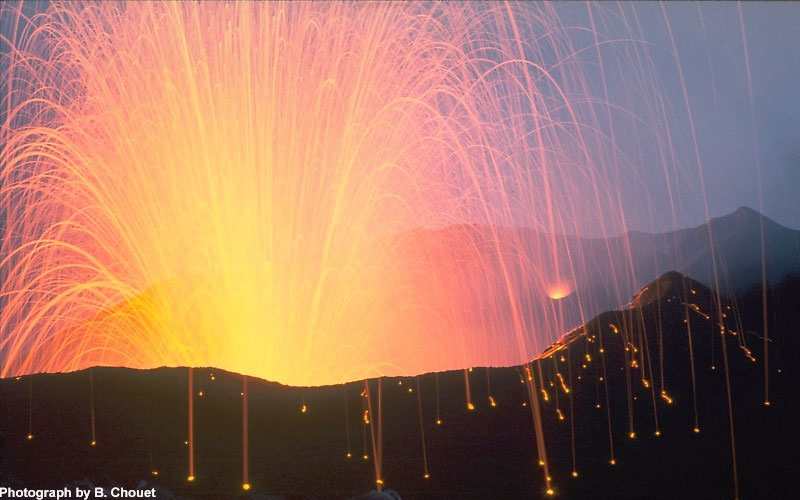Humans Spew More Carbon Dioxide than All of Earth's Volcanoes

Explosive volcanic eruptions might be attention grabbing, but a new review of research finds that their environmental impact pales in comparison to human activities. According to the research, humans put out the same amount of carbon dioxide in three to five days that all of the volcanoes on Earth put out in one year.
"Anthropogenic carbon dioxide emissions dwarf global volcanic carbon dioxide emissions," study researcher Terrance Gerlach, of the U.S. Geological Survey, said in a statement. Carbon dioxide, or CO2, is the main greenhouse gas responsible for climate change.
Gerlach crunched the carbon dioxide numbers from earlier studies of volcanic output, finding a range of 0.13 to 0.44 billion metric tons, or gigatons, of CO2 per year. In comparison, the estimated rate of human carbon dioxide emissions for 2010 alone is 35 billion metric tons.
For instance, here are a few carbon-emitting human activities and their carbon-dioxide outputs:
- Land-use changes: 3.4 gigatons per year
- Light-duty vehicles (mainly cars and pickup trucks): 3.0 gigatons per year
- Cement production: 1.4 gigatons per year
Present-day human carbon emissions could even exceed the CO2 output of several supervolcano eruptions, including the giant eruption that will eventually occur at Yellowstone National Park, Gerlach wrote in the American Geophysical Union's newsweekly Eos. These mega-eruptions are very rare, with the last one occurring 74,000 years ago in Indonesia.
In fact, to scale up volcanic emissions to an equivalent of what we release would require the release of more than 200 cubic miles (850 cubic kilometers) of magma per year, the researchers calculate. For comparison, Lake Ontario holds about 393 cubic miles (1,640 cubic km) of water.
You can follow LiveScience senior writer Stephanie Pappas on Twitter @sipappas. Follow LiveScience for the latest in science news and discoveries on Twitter @livescience and on Facebook.
Sign up for the Live Science daily newsletter now
Get the world’s most fascinating discoveries delivered straight to your inbox.

Stephanie Pappas is a contributing writer for Live Science, covering topics ranging from geoscience to archaeology to the human brain and behavior. She was previously a senior writer for Live Science but is now a freelancer based in Denver, Colorado, and regularly contributes to Scientific American and The Monitor, the monthly magazine of the American Psychological Association. Stephanie received a bachelor's degree in psychology from the University of South Carolina and a graduate certificate in science communication from the University of California, Santa Cruz.









